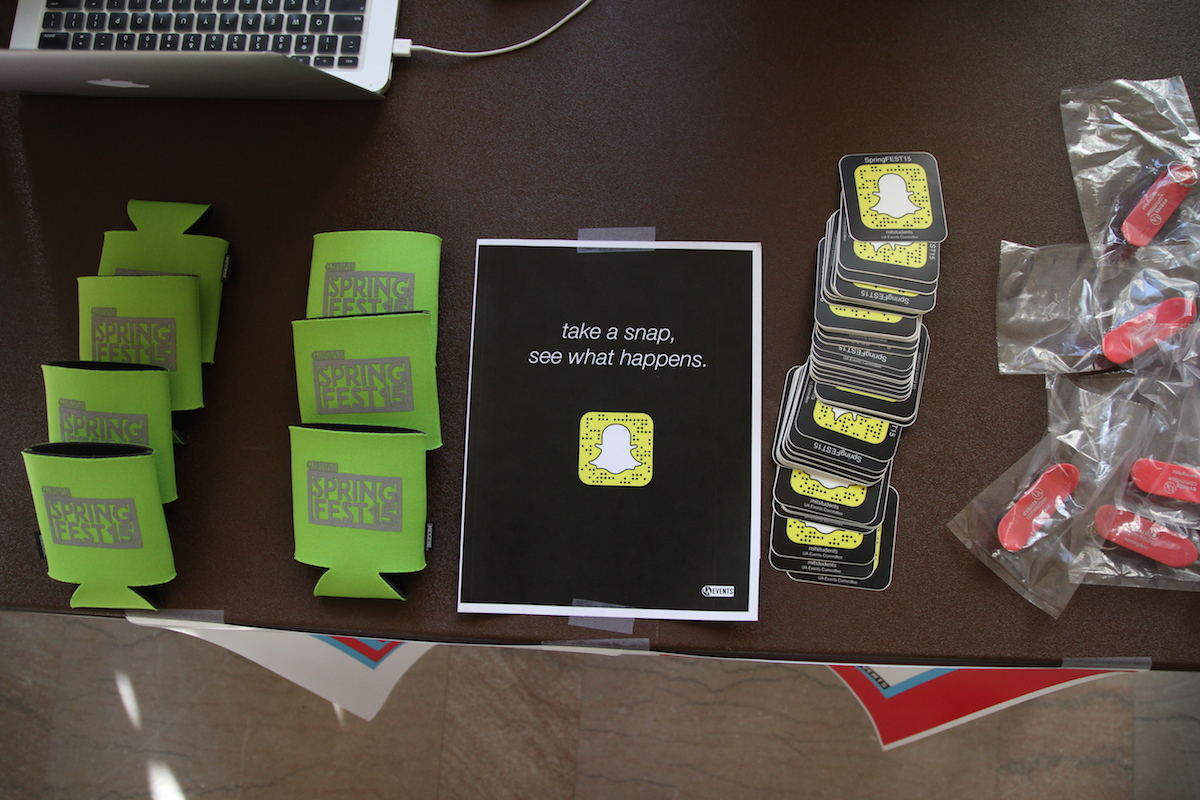Snapchat Case Study: Or, How We Learned to Love the Sticker
March 31, 2015
Our goal as members of the Division of Student Life communications team is to show that MIT has a thriving, vibrant community full of activities and events, and to illustrate it in a way that is student engaged and student driven.
Springfest is no exception. It is one of the biggest events hosted by the Undergraduate Association (UA) Events Committee. Springfest brings a major artist to the MIT campus and the attendance is in the hundreds, sometimes thousands, including people from MIT and surrounding communities.
Last year we focused only on promoting the event and managing live coverage, but this year we decided to get involved much earlier and create buzz for the announcement of the 2015 artist. After discussion with the Student Activities Office and UA Events Committee student leaders, we decided the best method to achieve this was through Snapchat. We didn’t have an established Snapchat account, so we had to build the Snapchat identity and promote the artist at the same time.
Why Snapchat?
We found that Snapchat is a popular social media channel used by our target audience: undergraduate students. The MIT Campus Stories feature on Snapchat hosts a stream of content based on location to share and see what’s happening on the MIT campus, and many students submit content through this feature.
The Stickers
Roughly a month prior to our conversations, Snapchat introduced their new profile picture function, where if you take a snap of a QR code specifically created for a profile, that profile would be added to your contact list automatically.
We wanted to create QR code stickers to build an audience for our new channel and to promote the announcement of the Springfest artist. There was no way to download the QR code directly, so we took a screenshot of the profile page and inserted it into a design that could be printed onto stickers. We added information about the event to the design and printed 520 stickers via StickerMule.com.
We asked the UA Events Committee to set up a booth in Lobby 10 to hand out stickers and other swag to create buzz for the announcement event and serve as a small pop-up for Springfest awareness.
On March 12, the UA Events Committee set up the booth to distribute stickers. By 5:00 pm, we had 229 followers, all added via the sticker, and had nearly run out of stickers. We had to rush order 400 more to accommodate the remaining four days that the booth was scheduled. In five business days, we amassed a total of 511 followers, almost all of whom are MIT students.
Because we handed out the stickers in one of the highest traffic areas, we had a greater concentration of student followers than we had on any other social media platform. We were able to engage and convert our target audience into followers.

A Snapchat narrative
We built the Snapchat content campaign with the idea that students would take over the account and produce content that would hint at who the artist is using the Snapchat Stories feature. They used multiple snaps to give one hint, making it a structured narrative. Snapchat describes this experience well:
“Snapchat Stories add Snaps together to create a narrative. When you add a Snap to your Story it lives for 24 hours before it disappears, making room for the new. Your Story always plays forward, because it makes sense to share moments in the order you experience them.”
Snapchat Stories are entirely engagement based. Unlike Instagram, which delivers the content directly to your feed, Snapchat Stories must be touched (“clicked”) to view, meaning the viewer chooses whether he or she wants to view each story.
For the stories we posted leading up to the announcement event, we ranged anywhere from 250 to 300 views per story. That means that between 40-80% of our audience was engaging with our content, depending on the follower numbers during that time. As a further effort to engage the audience, UA started tracking the number of screenshots and replies to the hints they were producing in order to see who was interested in the content, thus gamifying the content push.
What We Learned
One of the first things we thought of when considering Snapchat as a channel was creating a geofilter for the event. We realized that while that could be used for better engagement, it didn’t match the overall goal of creating a sustainable channel to be used for other purposes.
We also learned that by giving students control of the content, it opened us up to other ideas we hadn’t considered before, such as how to deliver the content for the hints. For future efforts on Snapchat, we recommend making use of the MIT Campus Stories function to better spread the messaging across campus.
Finally, by combining the two ideas of analog distribution and making use of influencers, we were able to extend our reach beyond the digital platform and establish an audience based on shared trust among students.

